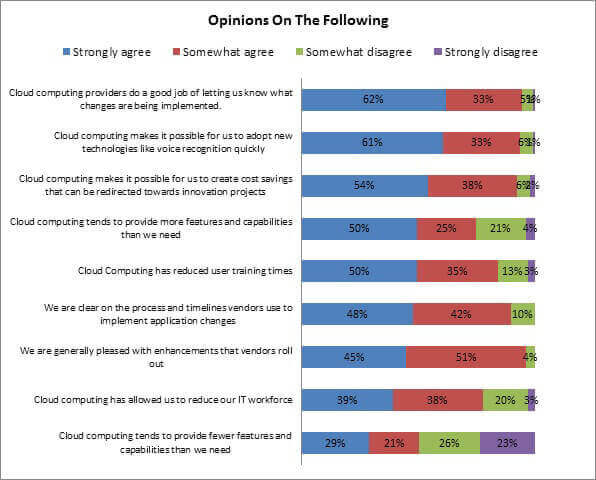Buzzword(s) Of The Week: Headless Commerce
Buzzword(s) of the Week: Headless Commerce
At RSR we endeavor to keep up with the latest technologies, particularly as they relate to retail. Yet, over the past three weeks an apparently new term, “Headless Commerce ” has popped up multiple times in our vendor briefings. Not a one of us had a clue what it meant, and queries to other boutique retail analyst firms got the same reaction: “What?? ”
So being diligent proxies for the retail tech buyer, we felt we had to find out where exactly this headless stuff came from. Wikipedia had no entry. The term itself brings creepy images to mind: one (unnamed) analyst suggested it reminded them of ISIS, and to me, I just keep thinking about The Headless Horseman and The Legend of Sleepy Hollow. Neither image is particularly appealing.
On to Google, we went. The best description we found is presented by Infosys on their web page. In short form, they said:
“Headless commerce architecture separates the content presentation layer (which is comprised of the content and experience management systems) from the business logic and functional layers (which are made up of the existing e-commerce stack, integration, and commerce management systems). Such architecture supports an e-commerce platform that has no ‚Äòhead,’ allowing for additional flexibility, customization, better shopping experiences, and freedom to grow. “
I can hear partner Brian Kilcourse’s voice in my head now, saying “Oh, you mean like N-tier architecture with a new name? ” Or maybe that’s just my own ex-CIO voice echoing in my head. Because as I read it, that’s the first thing that came to my mind, too.
What they’re trying to say, I think, is that given the need for speed, while assembling a shopping cart and performing checkout will always be the same, ( “maybe, ” she said), content and the context within which that content will be delivered will have to continuously change as consumer needs evolve.
I can buy that, and I can appreciate the absolute need for a new PIM (Product Information System): one that includes unstructured data from photos, to videos to reviews, to influencer quotes and on and on. I’m not sure all that many of you bought the first round of PIM, and I suspect many of you haven’t even made it to any kind of content management system (CMS), but there are new software players in town, and probably you want to take a look this time. For real. All these marketplaces and different selling venues demand access to content. Assembling it by hand every time is really, really inefficient.
Now back to the Headless Horseman.
Apparently Gartner created this new term, and even has a Magic Quadrant for it. I will say the software products we’ve seen are interesting, and as I said earlier, content and context is more important than ever. It’s so important that it might be fun to roll back in time a second and take an RSR bow.
RSR has been talking about something called the 5 C’s since at least 2012. That’s the creation date on the photo below and it’s the oldest presentation I could find with a graphical depiction of them. The 5 C’s are a virtuous circle with the customer at the center enveloped in the context of the moment.

The lady in the middle (who, you will note, does have a head), represents the 5th C: Customer. We’ve evolved the 5th C so that it’s now, “Customer Insights ” but it still works the same way in principle. And obviously the customer is still really important.
If we contemplate this drawing from a technical perspective for a moment, it certainly implies that each function should be “plugged in ” to each other via API’s, and should be context-aware. Of them all, content and context are the trickiest to execute. Creating a community isn’t a technical problem as much as it is a strategic issue.
In any case, I’m not so much “claiming ownership ” of the concept behind a problematic term as I am saying there isn’t anything terribly new here. As retailers, you MUST expect that you’ll have to separate content from commerce. Otherwise, your technologies will never become context-aware. If you haven’t done that yet, it’s time to give it some thought.
I’m also not saying you need to buy each piece from a different vendor. One vendor may have a full suite it sells as a solution. But that suite should probably be decouple-able so that you can take advantage of new, required presentation opportunities, or what I might call new contexts.
As Chelsea Handler would say, “So that’s what I know about Headless Commerce. “
Do I think this is a necessary term? Honestly, I don’t. It doesn’t really tell us anything. But it’s clearly out in the wild (here’s how one knows which vendor is a Gartner client and those who is not!). So, as a public service, we’re letting you know what it is.
When Cloud was still “cloudy ” we called it out as such. Over time, Cloud’s meaning has become clear, and we’re not hearing a lot of “Hey, we’ve been in the Cloud since the 80’s ” remarks in our briefings anymore.
I guess it’s possible the same thing will happen with Headless. And at least I know I won’t be hearing “Hey, we’ve been headless since the 80’s ” in any briefings. But still….seriously: Headless commerce? Couldn’t they find a better name?
If you need help with other buzzword bingo terms, by all means, drop me a line. You know where to find me, and I always want to understand new things, even if I think they’re unnecessary.
After all, I’ve got a good head on my shoulders (snap!).
